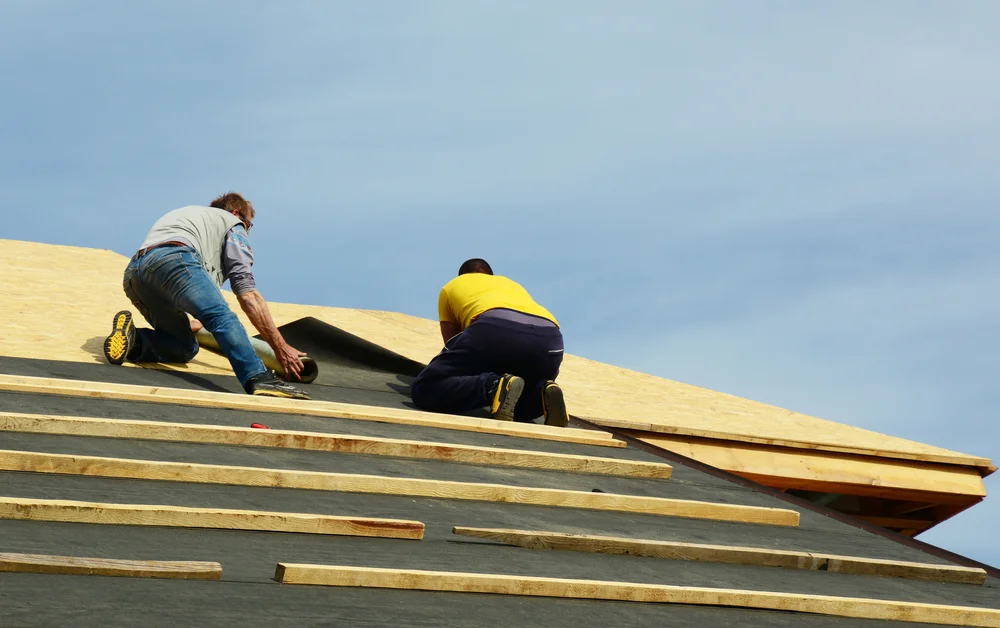We’re smack dab in the middle of the Utah winter currently, and the roof is one of several key home or building components that owners will be looking to protect from the elements. For certain roof systems, particularly those that have dealt with moisture issues in the past, certain specific items or accessories might be useful here, and the best example is the world of ice and water barriers.
At The Roof Doctor, we’re happy to assist clients with all of their roof needs, including installation of slate roofs, metal roofs and many others. We’ll sit down with you to discuss any issues your roof is having, including situations where you believe ice or water barriers might be useful for your setup. What exactly are these barriers, what are the key issues they help protect against, and should you consider them for your roof? Let’s have a look.
What Are Ice and Water Roof Barriers?
For those who are unfamiliar with these products, ice and water barriers for roofs refer to various forms of underlayment that are applied beneath the shingles and other roof coverings. They are typically applied directly to roof decking, and seal tightly around the nails. The primary purpose of these barriers is to provide an additional layer of protection against water infiltration, should there be any penetration or cracks in the shingle system.
Ice and water barriers also help protect against major temperature swings that could lead to ice-dam formation, which can cause tears or breaks in the roof and result in costly repairs. These barriers also help to prevent leaks by providing an additional layer of protection that’s designed to be watertight for many years.
Specific Risks Ice and Water Barriers Protect From
There are several risks that ice and water barriers protect against, primarily related to moisture buildup:
- Ice dams: One of the most potentially worrisome risks for a roof is the formation of ice dams. In extreme cold weather, water can freeze along the edges of your roof and form a dam-like structure which prevents further melting snow from properly draining off your roof. This can result in major leaks inside your home or building, potentially leading to many thousands of dollars in damages. But with an ice and water barrier installed, you can minimize the risks of ice dams forming.
- Water infiltration: Even in moderate climates without heavy snowfall or extreme temperature swings, normal rainfall can still cause leaks within your roof if it breaches any cracks or gaps in the shingle system. An ice and water barrier helps to protect against this by providing an extra layer of moisture-proofing that helps keep water out.
- Gutter clogs: Another risk related to extreme cold weather is the potential for gutters and drains to become clogged with ice. This can result in water pooling up on your roof, leading to a range of issues including structural damage from increased weight and further moisture infiltration through the shingle system if not addressed quickly. The extra layer of protection provided by an ice and water barrier can help to mitigate these risks.
- Wind damage: Finally, wind-driven rain and storms can also cause damage to roofs if not properly protected. An ice and water barrier provides an extra layer of protection that helps keep wind-driven rain out of the shingle system, minimizing the risks of potential leaks in these types of scenarios.
Areas of the Roof Where Ice or Water Barriers Are Placed
While ice and water barriers can technically be placed just about anywhere, here are some of the most common locations where they’ll be installed on roofs:
- Eaves: Because the edges of a typical roof are exposed, they can be particularly vulnerable to water damage in extreme weather. Installing an ice and water barrier along the eaves of your roof can help protect it from any moisture infiltration.
- Valley flashing: Valley flashing is a special type of flashing that runs in between two sections of the roof at a 90-degree angle, typically where two sloping surfaces meet. It’s important to use a special ice and water barrier product when installing this type of flashing, as it helps keep moisture out and protect your roof from any leaks along the valleys.
- Roof penetrations: For various penetration types, such as for skylights, plumbing vents, or other roof accessories, it’s important to use an ice and water barrier product around the perimeter of these penetrations as well. This helps prevent any moisture from seeping underneath the shingle system and causing potential damage.
- Entire roof: In other cases, a roof may be covered completely with an ice and water barrier in order to provide extra protection against any moisture-related issues.
Should You Install Barriers?
Whether you’re ordering a new roof or considering your current roof maintenance plan, taking the time to consider installing ice and water barriers can help protect your home or building against a range of potential risks related to moisture. It’s important to consult with a professional contractor in order to understand the specific needs for your roof system, as well as any additional considerations that may need to be taken into account.
In many cases, a professional will recommend installing barriers if you’ve had prior moisture-related issues or if you live in an area with extreme weather conditions. However, even if these factors don’t necessarily apply to your situation, it’s still worth considering, as the extra layer of protection provided by a barrier can be valuable in preventing future headaches.
For more on ice and water barriers for your roof, or to learn about any of our roof installation or replacement services, speak to our team at The Roof Doctor today.

